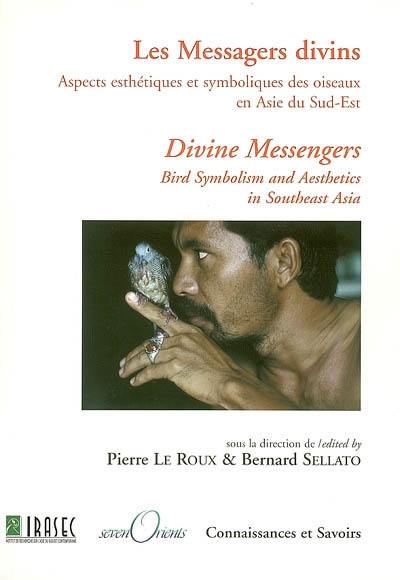
Fiche technique
Format : Broché
Nb de pages : 862-XXXVI pages
Poids : 1000 g
Dimensions : 15cm X 21cm
EAN : 9782753900592
Les messagers divins
aspects esthétiques et symboliques des oiseaux en Asie du Sud-Est
Quatrième de couverture
Existe-t-il une relation privilégiée entre hommes et femmes d'Asie du Sud-Est et oiseaux ? La faune aviaire joue en effet dans cette aire un très important rôle dans la cosmogonie, les croyances, la structure sociale, les rituels funéraires et la technologie rituelle inséparable des productions économiques : agriculture, pêche, cueillette, chasse, artisanat, commerce. La figure de l'oiseau en Asie du Sud-Est est à percevoir d'abord comme élément d'un couple symbolique essentiel : le serpent et l'oiseau qui représentent d'une part la virilité, la séniorité, l'univers chthonien, les pluies et d'autre part la féminité, le ciel, la saison sèche et la juniorité, c'est-à-dire l'ensemble des dépendants. Au sein d'une région caractérisée par l'alternance régulière d'une saison des pluies et d'une saison sèche et souvent par une bipolarité culturelle, la plupart des sociétés y ont élaboré une conception dualiste de l'univers, parfois trialiste : deux avatars d'une Totalité divine originelle. Une trinité composée de deux éléments principaux (l'aîné et le cadet) et d'un troisième (l'épouse), domine l'Asie du Sud-Est où l'opposition aîné/cadet est générale et concerne la plupart des systèmes de parenté, répondant à une constante de la culture. La position sociale de la femme y est, peut être plus qu'ailleurs, privilégiée sinon primordiale. Si, bien souvent, l'oiseau est la métaphore d'une jeune fille, ses envols se confondent toujours avec ceux de l'âme des défunts, prémisses de vies nouvelles et donc toujours symboles d'espérance.
L'Asie du Sud-Est ici va de l'Inde à la Chine, jusqu'à l'Océanie : Birmanie, Cambodge, Indonésie, Laos, Malaisie, Philippines, Thaïlande, Viêt Nam. Et elle englobe ses marches les plus lointaines : certaines contributions concernent l'archipel Andaman (Inde), l'île de Madagascar, la Papouasie Nouvelle-Guinée, Taiwan et le Népal.
Is there a special relationship in Southeast Asia between humans and birds ? Indeed, birds play here an important role in cosmology, beliefs, social structure, funerals, and ritual technology (which is not to be separated from economic productions : agriculture, fishing, harvesting, hunting, handicraft and trade). The bird in Southeast Asia is to be understood first as part of an essential symbolic couple : the snake and the bird, which represent masculinity, seniority, the underground and aquatic worlds, rainy seasons ; and femininity, the sky, the dry season, and juniority, i.e., all dependent people. In a region characterized by alternating monsoons and, often, by a cultural bi-polarity, most societies have elaborated a dualistic conception of the universe, sometimes a ternary conception : two expressions of a same original godhead. A trinity made of two main elements (the elder and younger brothers) and a third one (the wife) dominates throughout almost all of Southeast Asia, where the opposition between elder and younger is general and relevant in most kinship and marriage systems. Here, perhaps more than elsewhere in the world, the social position of women is privileged, if not primordial. If the bird, very often, is a metaphor for a maiden, its taking flight is always assimilated to that of the soul of the dead, the beginning of a new life, and so, always, a symbol of hope.
Southeast Asia here is understood as stretching from India to China, and south towards the Pacific. It thus includes not only Burma, Cambodia, Indonesia, Laos, Malaysia, the Philippines, Thailand, and Viêt Nam, but also the Andaman Islands (India), Madagascar, Papua-New Guinea, Taiwan, and Nepal.





